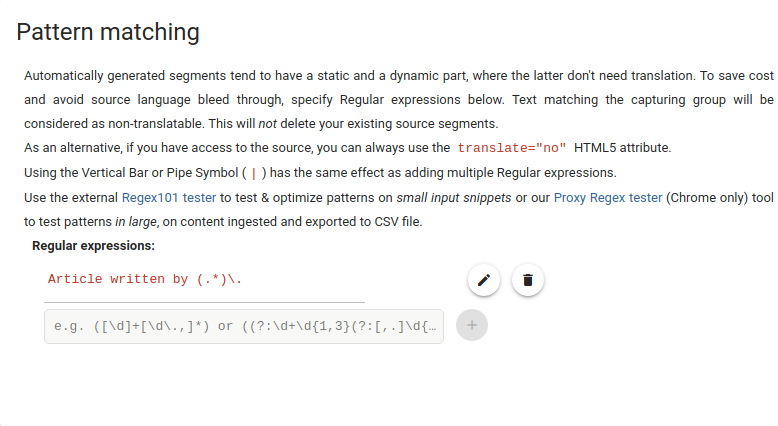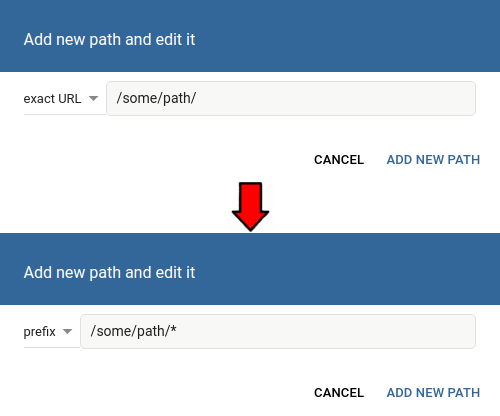Easyling Release Notes March, 2022
Apr 5, 2022 - Easyling.com
The days are getting longer and longer and summer is creeping closer. This seems to be a major productivity boost for our team. I have so many things to tell you this month from major improvements being added to Crest, such as support for Pattern matching to quality of life improvements, like the Crawl wizard automatically selecting the collection the correct resource types when building a Snapshot. We released quite a few fixes too! See the full article for the details!
Pattern matching in Crest
Pattern matching, found in the Advanced settings section of the Dashboard, allows you to merge segments based on a regular expression. For example, if you had a blog section where every article has an author attribution in the form of
Article written by ${username}.
In this case, when you Scan the different pages, you will have separate segments for every author. A better solution would be to have just one segment where the username is just a tag. Not only this will lessen the translation burden, it can also prevent bleedthrough too, as the attribution of new authors will just be a 102% match.
This can be achieved by adding a regular expression that matches the segment: Article written by (.*)\.. This feature has been unavailable in Crest, the JavaScript-based translation engine, until now.
Automatic resource selection in the Crawl wizard
Snapshots allow you to store the state of the website at a given time. Naturally, websites are quite a bit more than HTML documents, so snapshots can store multiple kinds of resources:
- JavaScript and CSS
- Images
- JSON
- XML
However, we noticed a common mistake made when inexperienced users are looking to take a snapshot of everything. Most of the time, the settings in the Snapshot section are found and everything is selected. However, Origin snapshots are built by crawls. If a crawl is set to only collect HTML pages (the current default behaviour), it will not collect the resources. The result is that while the snapshot is set to be able to store resources, there won’t be any to store.
To combat this, we made the Crawl wizard smarter. When you select snapshot building, the default collection settings change to match the selected settings of the snapshot you selected. This way, it is easier to create complete snapshots of sites, including resources.
Improved user experience on Path prefix overrides
The Path prefix overrides section, similarly to the Advanced settings, is one of the parts of the user interface where the old saying,
With great power comes great mistakes
holds especially true. One confusing scenario both for users and our support team was when an exact URL override was created that ends with a star (*). As you may already know, on the user interface, prefix overrides are displayed with a star at the end. With the new update, when creating a new override, if you type a star at the end, the selection is automatically converted from exact URL to a prefix override.
Miscellaneous fixes
At this point, having this section with a bullet-point list of smaller changes we made seems to be a tradition. Let’s not stop this month.
- We fixed a small issue with the Dropbox integration. The proxy used to send
HEADrequests to determine the size of the files that it must download from Dropbox but this was disabled. Instead, the API provided by Dropbox is used now. - An edge case prevented search and replace operations in snapshots that were taken when a staging domain was in place. We fixed it so that Snapshot search and replace is fully operational again.
- In the Pages list in tree view, if there were over one hundred elements directly under the root, some wouldn’t show up due to a bug that we squashed.
- We fixed a bug that caused the Don’t archive imported files in Dropbox tweak to be inoperable.
- We fixed a bug that caused the Preserve cookie domain tweak to be inoperable on projects that use subdirectory publishing.
- A bug was discovered around the auto-invite on project creation feature of Enterprise users that caused the invitation to fail occasionally.

